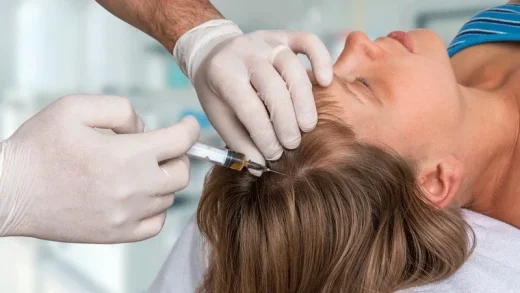Sleeping after hair transplant is a frequent question patients ask.
Hair transplants are minimally invasive procedures that are easy to heal. This is because they don’t require any real surgery, meaning there isn’t much to heal. However, it is still important to closely follow the correct aftercare routine to ensure the best success rate for your transplanted hair.
During a typical Follicular Unit Extraction (FUE) procedure, the technician removes the hair follicle from the donor area from the follicle. It then creates tiny holes all over the recipient area where the follicles are placed. During the 7-10 days after the surgery, the holes in both the donor and recipient areas of the scalp erode and heal.
Most patients return to their normal activities within 1-2 days after their procedure. Some patients take a week off work to give their hair a chance to look normal again, but this was not medically necessary.
Sleeping and Sleeping Position After Hair Transplant
Patients are generally getting confused about sleeping in the donor area after hair transplants safely and comfortably. How to sleep after a hair transplant is an important matter. Firstly there must be no pillow for hair transplant recommended. The other matters are as follows:
Hold Your Head High For Sleeping After Hair Transplant

A consequence of any surgical procedure, even minimally invasive, is swelling. Swelling is common after hair transplantation and is nothing to worry about. It typically lasts only a few days and may be too minor for some patients.
The further away you keep the swelling, the faster you can show yourself in public. The answer is for “How many days after hair transplant can I sleep normally” is about how you sleep for the first 7 days after your hair transplant determines how much swelling you will experience. A hair transplant sleeping position is also important, experts generally recommend sleeping on a recliner. It is the best way to sleep after hair transplant.
Keeping your head slightly elevated keeps swelling on your scalp and forehead to a minimum. Swelling typically peaks on the second and third days and then subsides. Experts recommend a recliner for the first 7 days to be safe.
Avoid Tossing and Spinning
Sleeping on a recliner has another benefit. It usually keeps you from tossing and turning or rubbing your hairline against pillows. For the first few days, you want to avoid anything that might prevent the new grafts from attaching tightly to your scalp.
As long as you can keep it from rolling onto your stomach or side, you’ll be fine. If you don’t have a bed and don’t know anyone else you can borrow from, it’s not a big deal. Your sofa isn’t a bad option either. In that matter, you can keep your head elevated by sleeping with a pillow on the armrest of the sofa. In this position pillow after hair transplant will help your head elevate and prevent you from turning.
You don’t need to put anything on your head while you sleep. It is recommended that you do not wear anything for at least 3 days while the crusts solidify. – Applying ice is even recommended if you experience swelling – you should not apply it directly to the newly transplanted hair area. You’re basically trying to avoid touching your hair with anything.
It is also a frequently asked question that what differs between how to sleep after fue hair transplant and how to sleep after fut hair transplant. The answer is there is no difference. The main idea is to protect the donor area so your FUE sleeping position or FUT is the same.
For more detailed information, reach us via the contact form and request information.
Frequently Asked Questions
When can I sleep normally after hair transplant?
Patients will be able to continue the majority of their regular physical activity, regular hair-washing practices, and their habitual sleeping position and routines after the 10 days. The scalp and hair transplants should be sufficiently healed by this time.
When can I sleep on my side after hair transplant?
The healing process is close to completion after six days. You are no longer required to sleep on your back; instead, you can switch to a side sleeping posture. Continue using disposable pads to keep from coming into contact with the pillowcase directly.
Can you sleep in the donor area after a hair transplant?
You can sleep in any position, including on your back, your sides, or your stomach, after 10 days. However, the transplanted areas should not touch the pillow or anything else for the first 10 days.